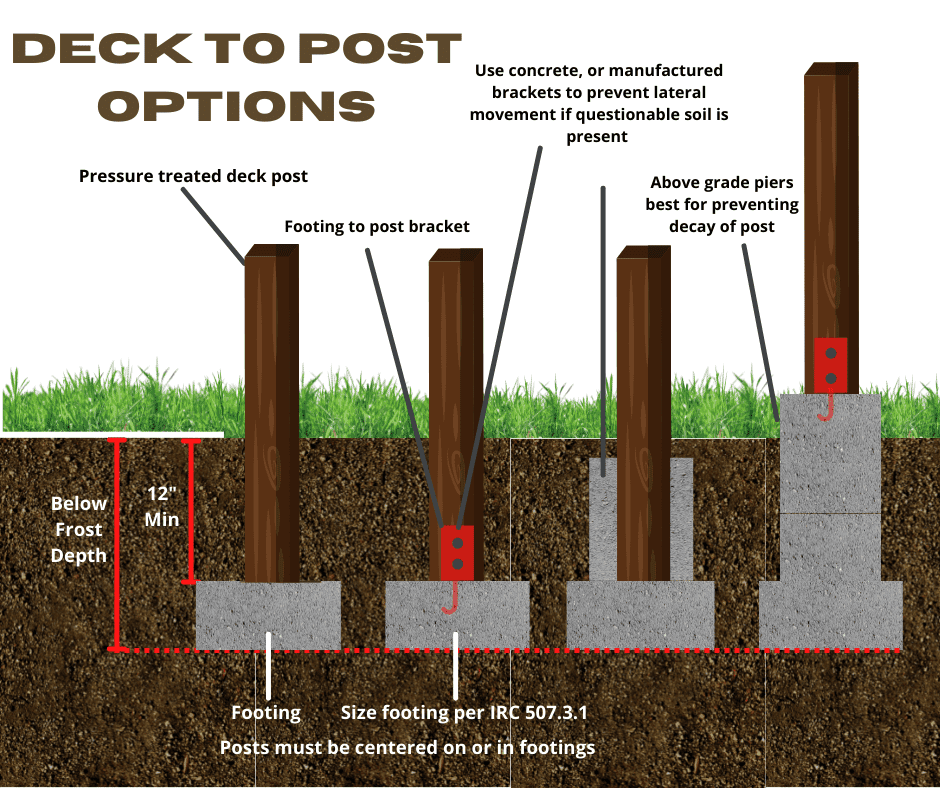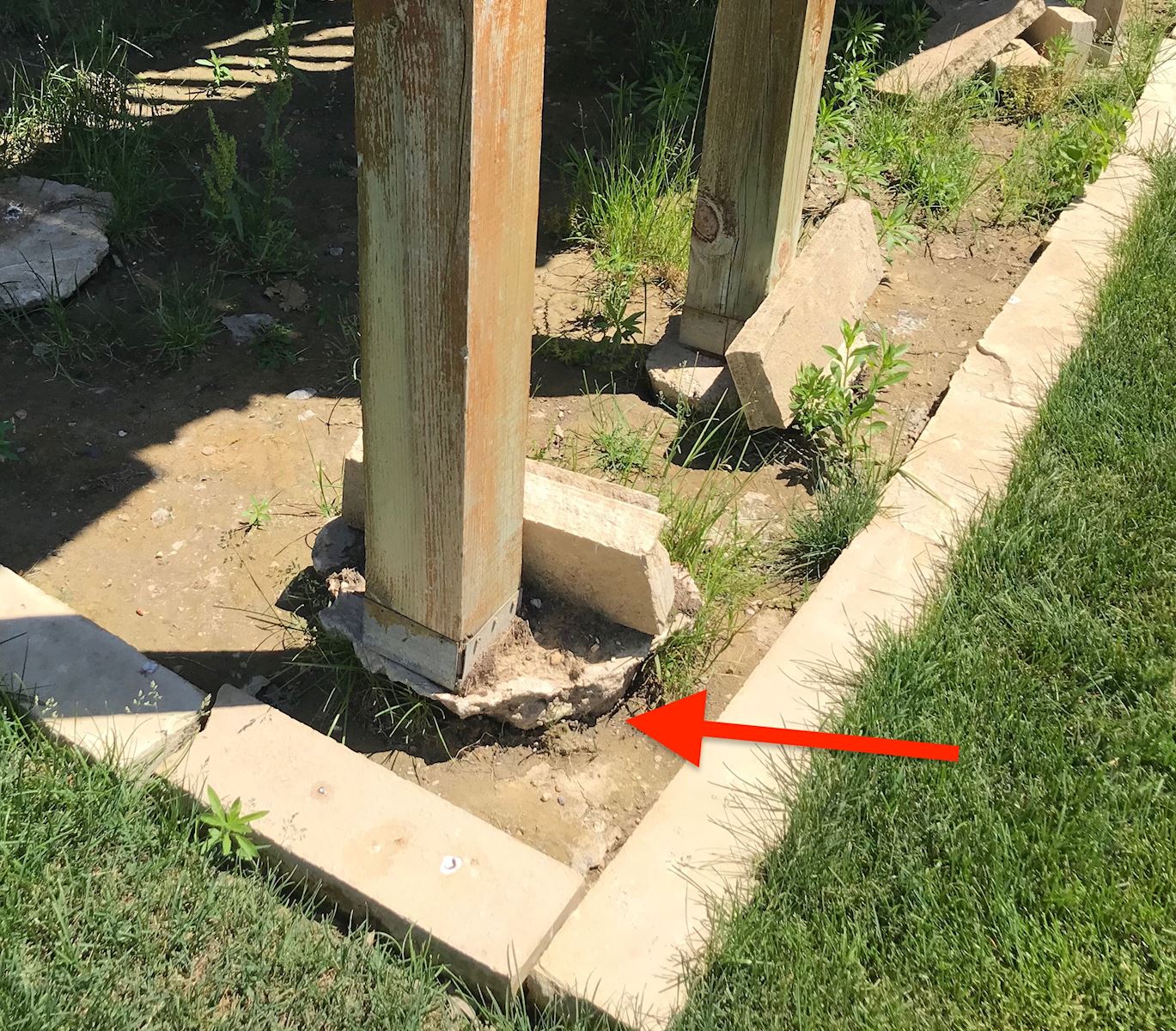Deck Footings Revealed: Understanding the Secret Parts of a Trustworthy Deck Structure
Deck Footings Revealed: Understanding the Secret Parts of a Trustworthy Deck Structure
Blog Article
Choosing the Right Deck Footings for Security and Longevity
The durability and security of your deck depend heavily on the kind of grounds you pick, as they offer the vital assistance and stability to stand up to the examination of time. In this discussion, we will explore the various types of deck grounds, take into consideration the important factors to consider when making a decision, and delve into the pros and disadvantages of various options.
Kinds Of Deck Footings
These footings consist of a cylindrical opening filled up with concrete, which supplies a solid structure for the deck posts. Concrete pier footings are relatively simple to mount and provide exceptional stability, making them a popular selection for numerous deck projects.
These footings are set up by screwing them right into the ground, which develops a safe structure for the deck. They also permit for very easy change and progressing of the deck if required.
Alternatively, some building contractors go with precast concrete grounds. These grounds are constructed from resilient concrete and be available in numerous sizes and shapes to accommodate various deck styles. Precast concrete grounds are convenient to mount and give a stable base for the deck framework.
Finally, another option is the post-in-anchor footing system. This sort of footing involves driving a steel anchor right into the ground and attaching it to the deck post. It supplies versatility in regards to positioning the deck articles and is ideal for decks with light-weight structures.
When picking the best kind of deck footing, it is necessary to take into consideration aspects such as dirt conditions, deck lots, and regional building codes (Deck Footings). Consulting with an expert service provider or structural designer can help make sure the suitable footing is selected for a secure and safe deck
Aspects to Take Into Consideration When Picking Footings
When choosing the appropriate grounds for a deck, it is important to carefully think about different variables such as dirt problems, deck tons, and adherence to regional structure codes. These elements play a considerable role in making certain the security and durability of the deck structure.
Among the main variables to take into consideration is the soil conditions. The type of dirt on which the deck will certainly be built identifies the type of grounds called for. Decks constructed on loosened or sandy dirts may need deeper footings to supply appropriate assistance and stop settling. On the other hand, decks built on clay or expansive soils may require grounds that can fit the dirt's propensity to increase and contract.
An additional important variable is the deck tons. The weight of the deck, consisting of the materials utilized and any potential live tons such as furnishings or celebrations, should be thought about when picking grounds. The grounds need to be created to bear the weight of the deck and disperse it evenly to avoid any kind of architectural problems or failings.
Finally, adherence to regional building codes is extremely important. Structure codes differ from region to area, and it is important to abide by the details requirements established by the neighborhood authorities. Deck Footings. These codes make sure that the deck is built safely and satisfies the necessary criteria for architectural stability and load-bearing ability
Concrete Footings: Benefits And Drawbacks

Concrete grounds supply numerous advantages and downsides when made use of as the foundation for a deck. On the positive side, concrete grounds supply excellent security and resilience.
One more benefit of concrete footings is their versatility. They can be put into different shapes and sizes to suit various deck layouts and configurations. Concrete footings can be customized to fit the specific demands and demands of the deck framework.
However, there are also some downsides to utilizing concrete grounds. This can raise the total expense of the deck task and may need specialist aid.

Helical Piers Vs. Sonotubes: Which Is Better?
In considering the structure alternatives for a deck, the contrast in between helical piers and sonotubes is crucial in determining the superior selection. They are twisted right into the ground utilizing hydraulic machinery, offering a long lasting and secure foundation for the deck.
The helical plates on the piers produce a solid hold with the soil, protecting against any kind of movement or moving of the deck. Sonotubes, on the various other hand, rely solely on the concrete filling up for security, which might not provide the same degree of stamina and resistance.
In terms of setup, helical piers are reasonably less complicated and faster to install contrasted to sonotubes. The hydraulic machinery utilized to turn the piers into the ground guarantees a effective and quick procedure. Sonotubes, on the various other hand, need excavating openings and pouring concrete, which can be labor-intensive and time-consuming.
Furthermore, helical piers are a more functional alternative. If required, they can be used in numerous soil problems and this content can be readjusted or enhanced. Sonotubes, on the other hand, might need additional support, such as rebar, in certain dirt problems or areas with high tons demands.
Selecting the Right Footings for Your Deck's Dimensions
For ideal official source architectural stability, it is crucial to meticulously choose the appropriate footings that line up with the measurements of your deck. The dimensions of your deck, including its length, width, and height, play a substantial function in establishing the kind and size of grounds needed.
When choosing grounds for your deck, it is essential to consider the load-bearing capability of the dirt. The weight of the deck, combined with the weight of any kind of furniture or people on it, puts in a considerable pressure on the footings (Deck Footings). For that reason, it is vital to choose footings that can effectively support this weight without sinking or moving in time.
The size and form of the grounds need to likewise be taken into consideration. Bigger decks with better dimensions call for larger grounds to give adequate stability and support. The shape of the grounds, whether they are round or square, depends on the design and layout of the deck. Furthermore, the deepness at which the grounds are mounted should be determined based upon the frost line in your region to protect against any heaving or shifting due to freezing temperature levels.
Verdict
To conclude, picking the best deck grounds is crucial for ensuring stability and resilience. Aspects such as the kind of grounds, the deck's measurements, and the advantages and disadvantages of different options should be thought about. Concrete footings use stamina and durability, however may be much more pricey and taxing to install. Helical piers our website and sonotubes have their very own advantages and drawbacks. Inevitably, picking the proper footings for your deck's details needs is necessary for a lasting and successful framework.
These grounds consist of a cylindrical opening filled with concrete, which provides a solid structure for the deck messages. Concrete pier footings are reasonably easy to mount and use superb stability, making them a popular choice for numerous deck jobs.
Precast concrete grounds are practical to mount and provide a secure base for the deck framework.
It provides versatility in terms of placing the deck messages and is ideal for decks with light-weight frameworks.
Concrete grounds supply numerous advantages and disadvantages when used as the foundation for a deck.
Report this page